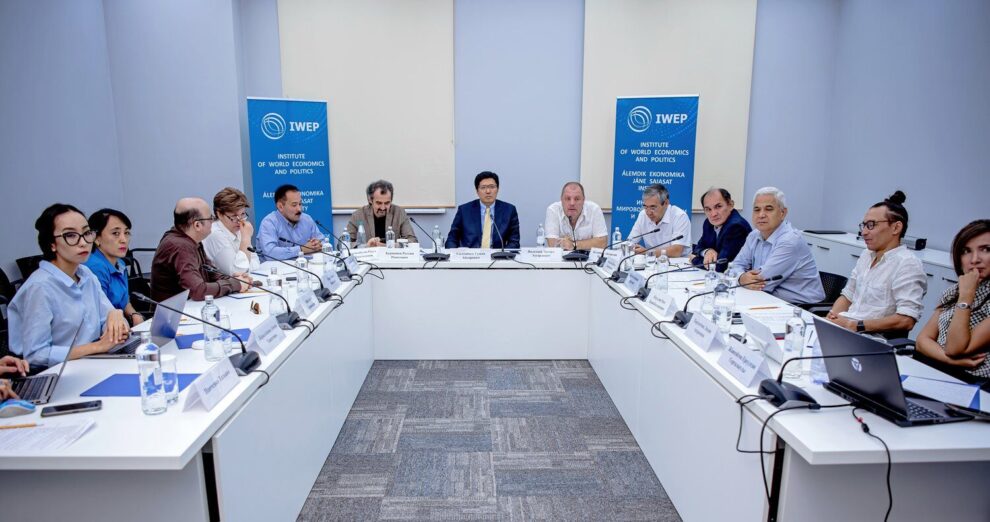Stronger ties between Central Asian nations will help the region withstand growing pressures in an uncertain world, according to an article published in the Kazakhstanskaya Pravda newspaper on Feb. 21 by experts from the Kazakhstan Institute for Strategic Studies (KazISS), EY (Ernst & Young), and Kazakh National Academy of Sciences.
The experts evaluate the region’s capacity and readiness to cooperate, explore and implement the tools to facilitate the integration process as a major driver for economic transformation.
KazISS expert on the directions for regional integration
Over recent years, there has been a palpable acceleration of regional dialogue in Central Asia, including a recent one conducted on the KazISS platform at the Central Asia 2030: Visions of the Future conference in Astana on January 20.
“The heads of all leading institutes and strategic research centers of the five Central Asian countries gathered together for the first time. An expert survey of participants yielded important results,” KazISS Director Yerkin Tukumov said.
The survey measured the readiness of Central Asian countries to integrate and the directions in which the countries are willing to cooperate.
“For example, experts believe the transformation of Central Asia into a transit hub [56.4 percent] is more likely than increased competition between our countries [33.3 percent],” Tukumov said.
The importance of security in the region will continue to grow, according to 64.1 percent of the analysts, who identified combining the efforts of Central Asian countries to ensure security as the most likely trend by 2030.
At the same time, 51.3 percent of the respondents consider the current level of integration processes as insufficient, and found it necessary to create an organization of the Central Asian countries.
A smaller proportion of respondents believe the level of interaction is “partly sufficient” and favor institutionalizing cooperation processes in sectors such as transport, water management, energy, and food security.
According to Tukumov, the importance of the construction industry is predicted to remain high due to the accelerating population growth and rising need for housing.
Nearly two million people are born in Central Asia every year. In 2022, around 939,000 people were born in Uzbekistan, 400,000 in Kazakhstan, 305,000 in Tajikistan, 181,000 in Kyrgyzstan, and 131,000 in Turkmenistan.
Central Asia’s population is among the youngest in the world, with a young age distribution of approximately 60 percent, which is much higher than the global average.
“This means that joint investments in the production of building materials, new technologies, and construction itself will be a good driver of economic growth,” Tukumov said.
EY experts on the region’s investment attractiveness
According to the EY Central Asia attractiveness report “With the global economy at crossroads, which way will Central Asia go?” published in November 2022, foreign investors are optimistic about their medium-term prospects in Central Asia.
The disrupted trade flows through Central Asia due to the geopolitical crisis between Russia and Ukraine did not significantly impact investors, as 42 percent of the respondents in the survey did not make any changes to their investment plans in the region.
Only 16 percent of investors canceled their investment plans completely or expect a slight decline in investment due to the obstacles caused by the conflict. In comparison, 28 percent of respondents see new opportunities, including establishing regional operations to mitigate trade sanctions against Russia.
The geopolitical crisis has caused destabilization in global value chains, and a third of the investors surveyed will focus on investing in supply chains and logistics.
Fifty-six percent of the respondents believe the region’s attractiveness will improve over the next three years, and only 8 percent responded that it would decline.
EY experts predict petrochemical and metallurgical industries will remain crucial for investors in the medium term, as marked by 57 percent of the surveyed investors.
The report also highlights the importance of diversifying the economy away from the oil and gas sector, given the region’s high potential for generating energy from wind and solar.
More than a quarter of respondents consider increasing investment in clean technologies and renewable energy sources.
Another dynamic sector in the region is the consumer goods market, which includes retail and agri-food. 53 percent of EY respondents predict a sizable inflow of investment into these sectors over the next three years, placing it on par with the energy sector in expected growth.
The investment attractiveness of the region would be reinforced by digital sector reform, according to EY experts.
“The level of digitalization is one of the most important factors when choosing a location for investment. Central Asian countries are relatively new to digitalization, and they still have a long way to go to build basic digital infrastructure that allows their citizens to take advantage of new technologies,” the report reads.
Human capital as a driver of integration
Central Asian states can accelerate the regional integration process by developing science, education, and collaborative research – areas where close ties have been developed between the states, according to Zarema Shaukenova, vice president of the Kazakh National Academy of Sciences.
“Their relevance becomes clearer if we assess the current geopolitical challenges, including human capital development,” she said.
With these developments in mind, Kazakhstan needs to approach the strategic challenges of the future, including the phenomenon of talented people leaving the country.
“Today, the cost of leaving is extremely low. The majority of the creative class speaks English, credit cards are available to everyone, the economy is digital and quite liberal, and the information space is accessible worldwide. In this sense, Central Asian countries are at a point where the struggle for human capital takes precedence over competition for natural resources,” Shaukenova said.
She explained that with the merger of science and technology resources and achievements, the region has a solid foundation for regional integration.
The expert also addressed the urgency for the region to diversify away from oil revenue dependency in order to achieve sustained economic growth at the average global level and join the ranks of countries with high incomes.



































